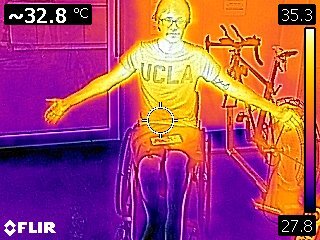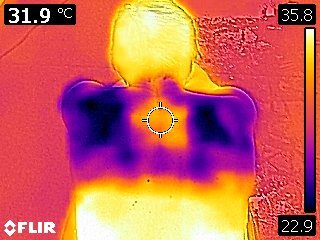Training at the AIS Part 2: Heat Chambers, Roadside Castles and Coffee Hunts
Last week, I made the journey from home in Geelong back up the highway to Canberra for another block at the Australian Institute of Sport (AIS). I have to say, now having done the 8-hour drive for the second time in a month, I'm really starting to notice landmarks between towns along the way. For example, not far into southern New South Wales there is a house built like a castle… you’ll know it when you see it. Check out this picture I found of it!
Cool Castle House in NSW
I’m adding castle house to my list of life goals. Anyhoo, I arrived in Canberra in a rather tired state early Sunday evening ready to get a good night’s sleep so that I’d be up bright-eyed and bushy-tailed the next morning to start my first week of training.
Like I’ve mentioned in my earlier blogs, I always salivate at the chance to come train and race on the track up here at the AIS. Compared to the rather bumpy and slow track back at home this track rolls smooth and fast! In fact, let's have a quick break down of types of track surfaces for all you reading along at home.
There are two main surfaces for athletics tracks. A multilayered granulated rubber surface (brands like Rekortan and Tartan) and a multilayered vulcanized rubber matting called Mondotrack (they have supplied the last 7 Olympic games and will supply the track for Tokyo 2020). For wheelchairs, the Mondotrack surface is faster because it has a stiffer and more uniform surface, it allows the wheels to roll with less friction, has less bounce to take power out of the push and allows the chairs to track around the lanes smoother. This is why I love coming up to Canberra to train and race. After a long stint on my track at home it always feels amazingly fast rolling around up here. Track surfaces are incredibly important since hundreths of a second can make or break a race. It can be really difficult to accurately know what I’m capable of when I’m at home racing on a slow track.
Fan-boying over track surfaces aside, an interesting part of my week involved heat chamber testing for upcoming events like Tokyo 2020. It’s forecasted to be rather toasty when we compete over there next year! Therefore, the team here at Athletics Australia want to make sure that we can all compete at top form even in some extreme conditions. Heat exhaustion is nobody’s friend. One interesting thing that sets me apart from most of the other athletes is the fact that because the level of my spinal cord injury is so high, I’m no longer able to regulate my body temperature and can’t sweat to help lower it . Therefore, this poses a unique concern for me in extreme weather conditions and in the training for them. On the other hand, this is quite advantageous to not smelling after training. Sorry all you people with body odor; I’m over here not sweaty and smelling like roses. However, it’s not ideal when summer rolls around or we compete in warm climates and I find myself overheating.
Having done some heat training prior to the 2015 Athletics championships in Qatar and again leading into Rio 2016, I caught up with my exercise physiologist to dust off the data from previous studies and plan out a trial in the heat chamber. This is roughly what went down:
6 - 10 mins cold water immersion in the recovery center. (secrets, shhh!)
Travel from hotel to competition (recovery center to heat chamber in this case).
30 mins warming up in the chamber simulating arriving at the track at just over 32 degrees Celsius or 90 degrees Fahrenheit. (Toasty!)
Pre-race warming up in track chair on stationary trainer.
20 mins out of chamber to simulate the time spent in the call room before event.
Back into heat chamber for maximal effort (time trial) on stationary trainer to simulate race.
Recovery strategies like ice towels and cold water after effort. (Chilly!)
Overall we were really happy with the results, I performed well in my simulated race and even hit a new top end speed on the stationary trainer! I also didn’t feel like my body was overheating and, more importantly, the data showed reciprocal evidence. Thanks Physio Team!
Check out these awesome thermal images of the process!
My head sticking out of the ice bath
Warming up in the heat chamber
Post-ice towels on my back
Up next, and quite conveniently in Canberra, was a national wheelchair track camp. Three days of training, meetings about upcoming major events, lectures on recovery and physio screenings. While they always provide a great learning opportunity, the camps also give you a chance to catch up and train with teammates. It’s a strange relationship you develop with teammates. You experience these major events throughout your career together and spend weeks living together, only to see them sporadically throughout the year. In my case, since I started this career so young, I really got to grow up with some of these teammates as we became a family as we went through this last decade of adventures together. Shout out to the OG7! Jake, Jemima, Angie, Madi, Sam, and Rheed!
The camp finished off with a competition on Sunday, I had a great start off the line but didn’t unleash my inner quadzilla enough in the last half of the race, crossing the line in windy conditions with a rather disappointing time. I partially blame the fact that the coffee maker in the dining hall was broken and the cafe near the track didn’t open early enough for us to get coffee. Trust me, Rheed and I tried everything. While the time wasn’t fantastic, races like this do boost the fire in me and fuel my massive amount of hunger and determination to better myself. There is nothing like a kick in the pants to get you moving, and so far this week, since then, I have been doing just that, recording quick times and hitting solid speeds. As I mentioned in my last blog, Baby Steps, one of the most important aspects of this career is not letting the occasional bad day or race get you down or to wallow in the “what-ifs”, but instead to channel that into self-motivation.
I’m really looking forward to my last few days in Canberra working on all the different parts of my race. We’ll work on over speed training on the treadmill, starts on the track, top end speeds, strength and conditioning training, and, of course, having the awesome medical team at the AIS keep me healthy. EKG and blood test results coming up soon. I know I have a lot more to give and accomplish in racing and with small steps everyday I will get closer to my goal. It’s amazing how you can flourish when you are in the right environment and the AIS in Canberra seems to be mine. I’m hopeful I'll be spending a lot more time up here leading into Tokyo 2020 next year.
Stay golden, Ponyboy… and you other humans, too! Literary reference for all you bookworms out there! ;)



